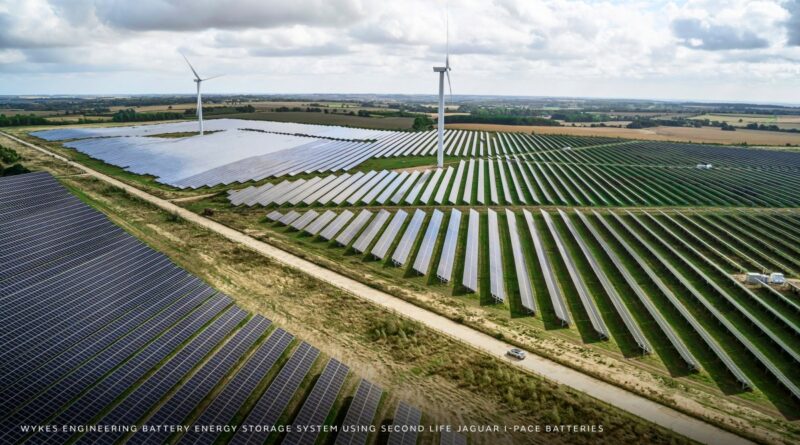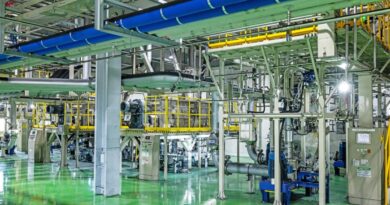Second-life Jaguar I-Pace batteries to power energy storage systems
JLR has found a use for its second-life Jaguar I-Pace batteries.
The automaker, formerly known as Jaguar Land Rover, is working with Wykes Engineering, a manufacturer of renewable energy products, to develop one of the largest energy storage systems in the U.K. to harness solar and wind power using old I-Pace batteries.
JLR’s announcement is the automaker’s first foray into energy storage systems. It follows similar moves by competitors to ensure some level of grid stability as the rise in electric vehicles promises to boost electricity demand. Tesla has long been a pioneer in solar energy and energy storage systems, and General Motors recently launched its own stationary storage system. GM also said in August that future vehicles would be built with vehicle-to-grid bidirectional charging capabilities.
Wykes Engineering’s battery energy storage systems (BESS) are capable of supplying power directly to the National Grid during peak hours, according to a statement from JLR. They can also draw power out of the grid during off-peak hours to store for future use.
“One of the major benefits of the system we’ve developed is that the containers are connected to the Grid in such a way that they can absorb solar energy that could otherwise be lost when the grid reaches capacity,” said David Wykes, managing director of Wykes Engineering, in a statement. “This excess energy can now be stored in the second life I-Pace batteries and discharged later. This allows us to ‘overplant’ the solar park and maximize the amount of power we generate for the area of land we are using.”
One of Wykes’s systems uses 30 second-life I-Pace batteries and can store up to 2.5 MWh of energy at full capacity.
The I-Pace, which uses a 90 kWh battery and has a range of almost 300 miles, originally went on sale in 2018. In August, JLR said it would discontinue the electric crossover before relaunching as an all-electric brand in 2025. Jaguar plans to debut its first next-gen EV in late 2024 and launch in 2025, but the company is still finalizing details of the launch calendar for its other all-new electric models coming by mid-decade.
JLR said it will give a second life to batteries from prototype and engineering test I-Paces at first, supplying enough batteries to store a total of 7.5 MWh of energy by the end of 2023 — enough to power 750 homes for a day. As more production vehicles reach their end-of-life, those batteries will be added to Wykes’s BESS.
As part of a technical collaboration, the two companies have figured out a way to use Jaguar I-Pace batteries as they are and slot them directly into racks in Wykes’s containers on-site. In other words, the I-Pace batteries don’t need to go through any additional manufacturing steps or have their battery modules removed to be used in Wykes’s BESS.
As the EV revolution takes hold, second-life batteries could exceed 200 gigawatt-hours by 2030, creating a global value of $30 billion, according to a study from McKinsey & Company. The partnership with Wykes is part of JLR’s move to adopt circular economy principles and achieve carbon net zero by 2039. As the automaker’s all-electric brand goes to market, JLR will create a new circular economy business model that involves reusing old vehicle batteries in energy storage systems “and beyond.”
Once the health of those second-life batteries diminishes, JLR will recycle them to recover and re-use raw materials, the company said.
In recent years, other automakers like Groupe Renault and Audi have found ways to repurpose old batteries, including by placing them into energy storage systems. Other OEMs like Lucid Motors, BMW and Proterra have incorporated reuse principles into their battery designs.





